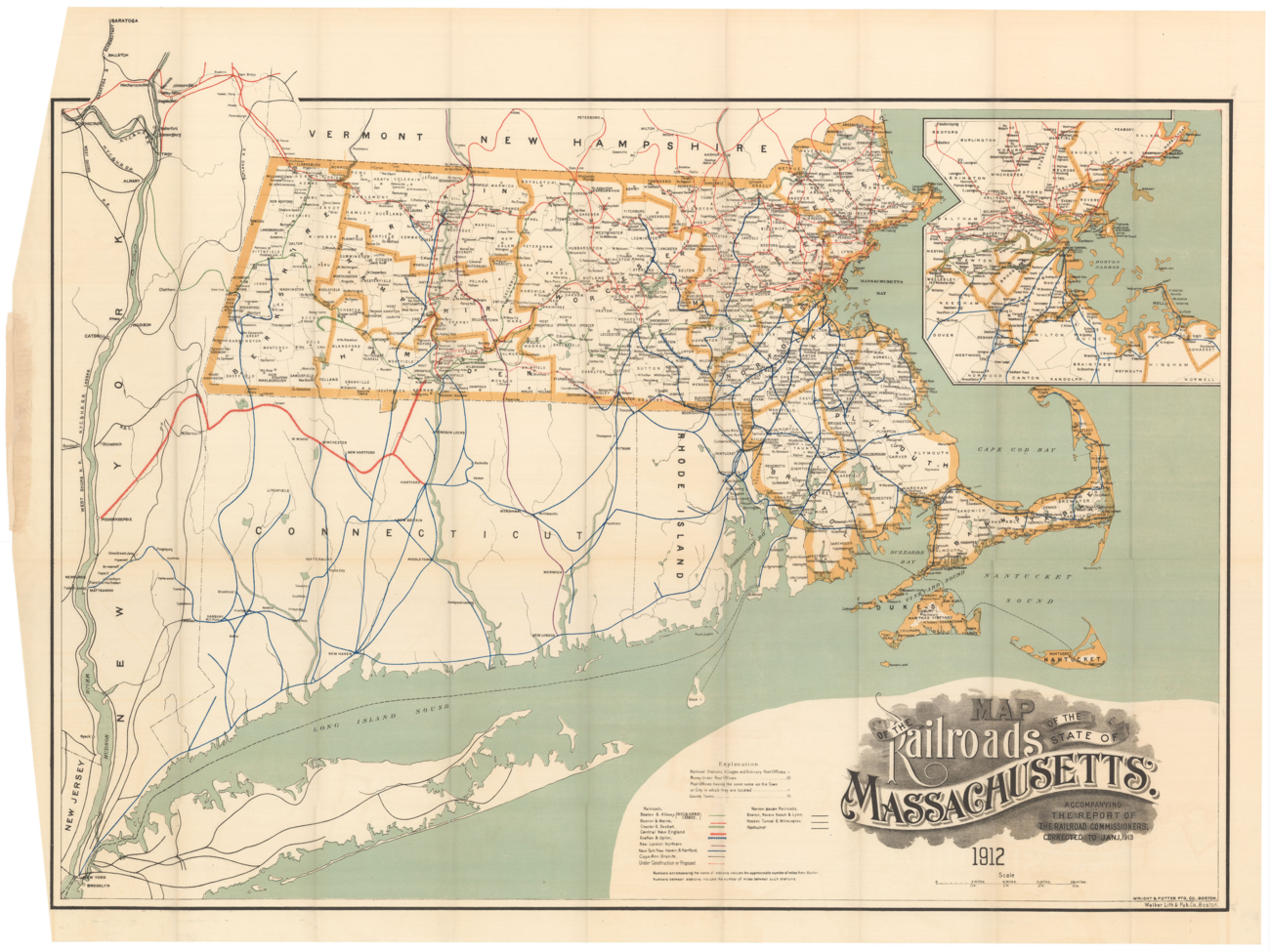User:OldPalChummus/sandbox7
MBTA Regional Rail Transformation[edit]
| MBTA Regional Rail Transformation (MBTA Rail Modernization) | |
|---|---|
 | |
| Location | Boston, Eastern Massachusetts, U.S. |
| Owner | Massachusetts Bay Transit Authority |
| Established | January 4, 2019 (Rail Transformation office established) |
| Status | Preliminary planning |
MBTA Regional Rail Transformation (also referred to as MBTA Rail Modernization) refers to a planned project, or collection of projects, to improve the Massachusetts Bay Transportation Authority Commuter Rail network by converting its existing diesel-hauled commuter-oriented operations into a high-frequency regional rail system. The project would be achieved through the electrification of all MBTA Commuter Rail lines along with significant upgrades to trackage, stations, maintenance facilities, and power infrastructure. Planning for regional rail was initiated in 2019 with approval by the MBTA Fiscal Control Board.
As of 2024, the MBTA Regional Rail Transformation is in the pre-decisional planning stage and lacks sufficient funding. There is no timeline for project completion; however, early projections indicated the project could take ten to twenty years to fully implement at an estimated cost of $17.9 to $28.9 billion. Planning for regional rail has also been subjected to several alternative proposals and project changes.
History[edit]
Background[edit]
The modern-day MBTA Commuter Rail network is derived from legacy regional and intercity rail services in Eastern Massachusetts
Early regional rail proposals[edit]
The New Haven, B&M, and NYC all planned to electrify several lines in the early 20th century. The New Haven had plans to electrify some southside commuter lines, and some infrastructure was built, including lower-level loop platforms at South Station. The New Haven tested electrification on South Shore and Nantasket Beach lines (along what is now the what is now the Greenbush Line). The Nantasket Beach line was electrified in 1895, and trolley service ran on the line until 1932. Between 1896 and 1899, the South Shore was electrified from Braintree to Cohasset, with an unusual center-of-the-track third rail. However, the third rail was dangerous at grade crossings, and the South Shore returned to steam-only service in 1902. The only New Haven lines that would extensively electrified north of New Haven, Connecticut, were the Bristol Secondary and the Fall River Branch in 1900, both of which emanated from Providence, Rhode Island. The New Haven would never follow through on its plans to electrify South Station and the inner section of the ex-B&P.[1]
Despite a study to electrify the mainline to Framingham plus the Highland branch, the NYC only electrified the short Lower Falls Branch. Quadruple-tracking and electrification of part of the ex-Eastern Railroad was planned by the B&M around 1910 when it was briefly under control of the New Haven, but this fell through when they separated.[1] Service levels on the three major railroads peaked around 1910 and began to decline from streetcar and later auto competition in the 1910s.[2] The independent BRB&L electrified its mainline and single branch line in 1928 and increased service to near-rapid transit levels. Two Old Colony branches were converted to an extension of Boston Elevated Railway (BERy) rapid transit in the 1920s.[1]
Northeast High Speed Rail Improvement Program[edit]
In the 1990s, Amtrak upgraded the Northeast Corridor north of New Haven to get it ready for the high-speed Acela Express trains. Dubbed the Northeast High Speed Rail Improvement Program (NHRIP), the effort eliminated grade crossings, rebuilt bridges and modified curves. Concrete railroad ties replaced wood ties, and heavier continuous welded rail (CWR) was laid-down. In 1996, Amtrak began installing electrification gear along the 157 miles (253 kilometres) of track between New Haven and Boston. During this time, it had been assumed that the MBTA would utilize this infrastructure for electrified Providence Line service by 2000.
Central Artery/Tunnel Project (CA/T Project)
The original Big Dig plan also included the North-South Rail Link, which would have connected North and South Stations, but this aspect of the project was ultimately dropped by the state transportation administration early in the Dukakis administration. Negotiations with the federal government had led to an agreement to widen some of the lanes in the new harbor tunnel, and accommodating these would require the tunnel to be deeper and mechanically vented; this left no room for the rail lines, and having diesel train passing through the tunnel would have substantially increased the cost of the ventilation system.
Indigo Line[edit]
The Indigo Line was a proposed rapid transit service of the Massachusetts Bay Transportation Authority that would have incorporated parts of the former Grand Junction Railroad, the Seaport District's Track 61, a spur to Riverside station and other MBTA Commuter Rail lines. The Indigo Line project was officially proposed in 2014 and was canceled in 2015.
Conversion of underutilized rail infrastructure within the Greater Boston area into regional rail or semi-metro services has been discussed for several decades, mostly in relation to the Fairmount Line. The term "Indigo Line" dates back to the creation of the Fairmount Indigo Planning Initiative in 2012; this study was facilitated by the Boston Redevelopment Authority (now the Boston Planning and Development Agency) which recommended transforming the Fairmount Line into a hybrid rail line (similar to New Jersey Transit's River Line). The hybrid approach was intended to be a low cost alternative to implementing high-frequency services on existing right-of-ways through the use of diesel multiple units.
2019 Rail Vision Proposal[edit]
Project Development[edit]
Project Concerns[edit]
See also[edit]
References[edit]
External Links[edit]
- ^ a b c Humphrey, Thomas J.; Clark, Norton D. (1986). Boston's Commuter Rail: Second Section. Boston Street Railway Association. ISBN 978-0-938315-02-5.
- ^ Humphrey, Thomas J.; Clark, Norton D. (1985). Boston's Commuter Rail: The First 150 Years. Boston Street Railway Association. ISBN 978-0-685-41294-7.


